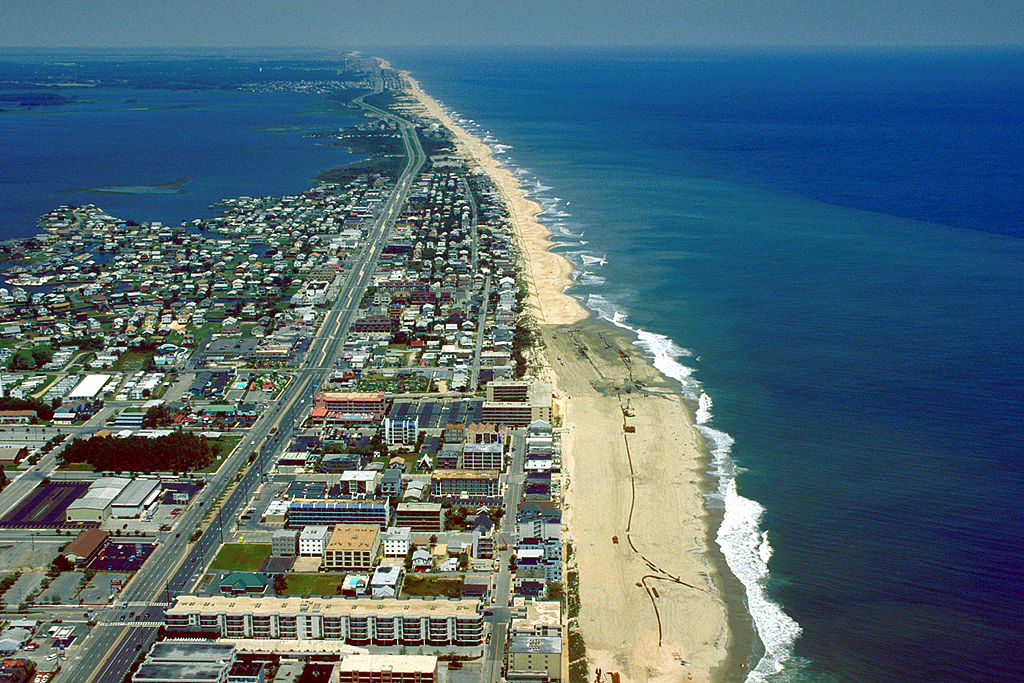Views expressed in opinion columns are the author’s own.
The Maryland House of Delegates has trampled Ocean City, or so its histrionic politicians would have us believe. The city’s aspirations to preserve the pristine beauty and untouched glamor of its beaches have been struck down in tandem with a proposal to forbid the construction of wind turbines within 30 miles of the city’s coast. This conflict has been fought for years, and Ocean City representatives are now looking to escalate their concerns to the federal level.
The whole situation comes from an outrageously vain case of NIMBYism on Ocean City’s part. The pushback against wind turbines comes from fears that they’ll be an eyesore to visitors, who will take their business to other, clearer horizons. This comes after the turbines’ leases have undergone extensive community outreach efforts and careful environmental review at the state and federal levels, according to Clint Plummer, the Vice President of Development for one of the wind turbine companies coming to Ocean City.
[Read more: College Park City Council supports a possible county-wide plastic bag tax]
While I’m all for local governments championing their rights, I think it’s important that the House take the utilitarian route when it comes to environmental decisions. Ocean City may lose some seasonal tourism dollars, but the revenue from wind energy to fuel American homes is a greater benefit for more people.
It’s a move to stop buying overseas wind energy and instead bring the industry to Maryland while situating the turbines off the coast — productive areas that don’t disrupt resident communities. This accommodates Maryland’s recently boosted goal to increase the percentage of its energy sales from renewable sources to 25 percent by 2020. These wind turbines would be in the best interest of the state and the communities that would gain access to cleaner energy — a population of about 6 million people.
Meanwhile, Ocean City is home to fewer than 10,000 permanent residents. Mayor Rick Meehan has advocated on behalf of them and the millions of annual visitors to his city, saying that the turbines shouldn’t cloud the ocean view because “that’s what you’ll see forever.” Yet while the city works with businesses to promote pollution prevention plans and has enacted several environmental measures at the local level, Ocean City is still a transient place. The beach won’t last forever, but it can certainly leave a legacy of sustainability.
As a beach, Ocean City is continually eroding. Its sands are being transported away from its shores, and as sea levels rise, it’ll eventually be submerged. The National Oceanic and Atmospheric Administration has calculated that there is an 87 percent chance of at least one flood high enough to submerge the city by 2080, and incidences of coastal flooding are on the rise.
[Read more: College Park is a pollution time bomb]
Since the 1990s, the city has had to artificially replenish its sands and spend millions on beach replenishment to protect its infrastructure and overall integrity. It’s only a matter of time before erosive forces overcome erected barriers and replenished sand; fighting the repercussions of climate change in Ocean City is a money sink, and it is not the most effective way to direct our resources.
Ocean City should have free reign over its aesthetic, but visual beauty has to be universally understood as less important than sustainability. For a city that’s in constant battle with its environment, there should be greater commitment to utilitarian environmental policy and recognition of the illegitimacy of NIMBYism. We’ve spent centuries prioritizing short-term conveniences over long-term environmental repercussions, and now we have no time for compromises.
Sona Chaudhary, opinion editor, is a sophomore English and geology major. She can be reached at sonachaud@gmail.com.



